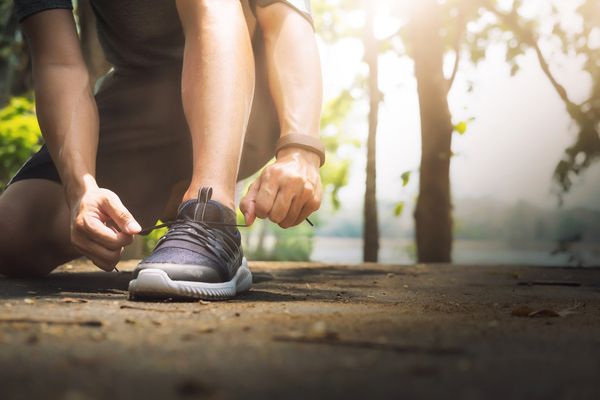
Experiencing blisters or toe pain? Do your shoes feel too tight or too loose and uncomfortable? The way you tie your laces can help support various foot issues.
Next time you're lacing up your shoes, try these 3 lacing techniques to help enhance your comfort.
Heel lock lacing technique
Have you recently bought new running shoes but you find that they slip a bit in the heel when you are wearing them? If so, then give this alternate lacing technique a try to see if you can secure your heel in your shoe a little better.

Lace your shoe as you normally would from the bottom to the top of the shoe.
As you get to the top you will stop your lacing before you reach the last set of eylets.
Take the lace on the same side and create a loop with the lace and insert the end in the last eyelet but don’t pull the loop tight.
Repeat step 3 on the other side of the shoe.
Take the lace ends from either side and pass them through the loops on the opposite side of the shoe.
Put your foot in the shoe and snug the laces to help secure your heel into the back of the shoe better.
High instep lacing technique
If you are getting pain on the top of your foot due to having a high instep and getting increased pressure from the laces on the top of your foot, here are the steps to alleviate the pressure and pain.

Lace your shoes from the bottom of the shoe as you normally would.
When you reach the area of the shoe where you are getting pain in your foot, at that spot, rather than crossing the laces on top of the foot, run the lace up the same side of the shoe to the next hole and then continue with regular lacing the rest of the way.
This will create an open space in the laces above where you are having pain in your foot.
Wide forefoot lacing technique
Did you just buy a new shoe only to get it home and realize that it might be a little too narrow in the toe box to fit comfortably.
This lacing technique can help create some more space in the toe box and reduce pressure on your forefoot.

Remove your laces completely from the shoes.
When you start lacing your shoes, instead of starting in the holes at the very bottom of the shoes (closest holes to the toe box), skip the first set of holes and start the lacing in the second set of holes.
By skipping the first holes you will get less tightening of the shoes closer to the toe box and this can allow for less pressure on the forefoot.
This technique can help reduce pressure on bunions and toe deformities.
Check our locations page to find a clinic near you or book online to schedule an appointment with a certified pedorthist. Visit our pedorthic services page to learn more about how a pedorthic assessment can help.

We use cookies and other technologies to enable core functionality on our website and to provide you with a personalized experience. For more information on cookies and how to manage your settings, visit our updated Privacy Policy.
We can help you move and feel better.
Book an appointment today.